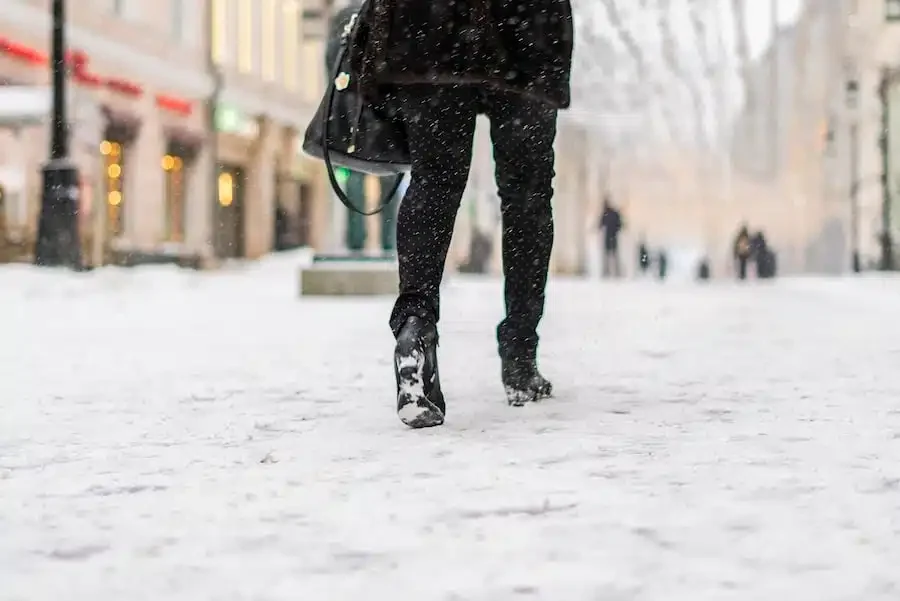Common Weather Factors Leading to Crashes
Weather factors that contribute to motor vehicle accidents in New York include:
- Snow and ice – Snow and ice lead to decreased traction and visibility, making it more difficult to control and stop your car quickly to avoid accidents.
- Black ice – Invisible patches of ice make roads dangerously slick. “Black ice” forms more quickly on and under bridges and on roads that receive less traffic or sun exposure.
- Freezing rain – Roads quickly become slippery in freezing rain, affecting your ability to maneuver and make quick stops. It can also affect visibility.
How Winter Weather Can Affect Who's Liable in a Car Accident
Several parties can be held liable in winter-weather-related wrongful death cases, including the following:
- Drivers who fail to exercise caution in dangerous conditions
- Property owners who don’t maintain safe premises
- Municipalities responsible for snow removal on public roads
New York traffic laws that can affect liability in a winter weather car accident include:
- Speeding – The law requires drivers to maintain a reasonable and prudent speed based on weather.
- Following too closely – Drivers must also maintain a reasonable and prudent distance given speed, traffic, and road conditions.
- Windshield wiper and headlight use – Any time drivers use their windshield wipers due to weather conditions, they must turn on their headlights.
- Failure to maintain a vehicle – Every motor vehicle on public highways must have adequate equipment in working order, such as brakes, steering mechanisms, turn signals, horns, and wipers.
- Illegal lane changes – Drivers cannot move from their lane until the change can be made safely, which may differ on snowy or icy roads compared to normal conditions.
Proving Negligence in Winter Weather Conditions
To prove that another party was negligent in your car accident, you must show that they had a duty to act reasonably, that they breached that duty, and that their actions or inactions caused your loved one’s injury or death.
There are several main ways in which another party can breach their duty to act reasonably.
Property and Business Owner Negligence
Property owners and businesses are legally responsible for keeping their premises reasonably safe. This duty includes maintaining safe sidewalks, walkways, and parking lots by clearing ice and snow to help keep pedestrians safe. However, it is against New York law to move snow from a home or business into a street.
New York also has a “storm in progress” rule that requires property owners to clear sidewalks within an “adequate period” after a storm. Some municipalities have additional laws. For example, Buffalo’s snow removal code requires that snow be cleared from sidewalks before 9 a.m.
Driver Negligence
New York drivers must adapt to weather conditions while on the road, which might mean reducing speed or not following too closely. They also must wait to change lanes until they can do so safely. Drivers also need to maintain their vehicles so that problems such as bad brakes or broken headlights don’t contribute to crashes.
If your loved one got into an accident with someone who was driving as part of their employment, you may be able to collect damages against their employer. Under vicarious liability, companies are strictly responsible for employee actions while performing work duties. You do not have to prove the company itself was negligent.
Comparative Negligence in Winter Weather Cases
New York is one of several states that have a pure comparative negligence law. A plaintiff can collect damages if they aren’t 100 percent responsible for their accident and injuries, but the percentage of fault they hold reduces their compensation. For example, if you are 20 percent responsible, you can collect 80 percent of your damages.
Who Pays for Damages in a Winter Weather Car Accident?
New York is a no-fault insurance state, so you must turn to available personal injury protection (PIP) coverage to cover basic economic damages, such as medical bills and lost wages. Minimum car insurance requirements in New York include $50,000 in PIP coverage.
If you suffered a serious injury or economic loss over $50,000, you can also file a personal injury lawsuit or auto liability claim against the other driver. If the other driver was at fault in your crash, their liability coverage pays for damages that exceed PIP limits. If their liability coverage isn’t enough to cover your full damages, you can also turn to any UM/UIM coverage included in your policy.
Health insurance is also a viable option to cover medical expenses, though your health insurance provider may demand reimbursement if you receive compensation through other sources. Collision coverage may also pay for property damage.
How Is Fault Determined in a Chain Reaction Accident?
Because winter weather can make it difficult to control and stop your vehicle, it often contributes to chain reaction car accidents involving multiple vehicles. Determining liability in these accidents can be tricky. For example, a following driver in a chain may have been going too fast for weather conditions and rear-ended a car behind you, pushing it forward into yours. Unsafe lane changes can also trigger a chain reaction accident.
What Happens if Snow From Another Vehicle Obstructs My View and Causes an Accident?
Drivers should do their best to clear snow from their vehicles to ensure an unobstructed view. They could also potentially be liable if snow flies off their car and causes an accident. Depending on the circumstances, failing to clear snow and ice may amount to actionable negligence. In these scenarios, our attorneys can evaluate the available evidence to determine if you have a viable case.
Could the City Be Liable if the Roads Weren't Properly Plowed?
The government is responsible for maintaining roads in a reasonably safe condition for travel. However, suing the government is tricky, and proving that the responsible agency did not remove snow or ice within a reasonable period after a winter storm can be difficult. You need an experienced attorney to take on the challenge. Richmond Vona has the skills, resources, and expertise to handle complex claims against the government.
Insurance Considerations in Snowy Conditions
It is essential to understand the terms of the governing insurance policies after an accident caused by snowy or icy conditions. Potential coverage sources include PIP, auto liability, UM/UIM, collision, comprehensive coverage, and health insurance. Our attorneys can help you evaluate the language in the applicable policies to maximize your compensation.
You must also comply with the deadlines for filing your claims. For example, you must submit your no-fault PIP claim within 30 days of your accident. You must also submit claims for medical expenses within 45 days of treatment.
Protect yourself by seeking prompt medical attention, thoroughly documenting your crash, and contacting an attorney as soon as possible. You will need evidence of your medical bills and lost time from work to collect PIP benefits. You must also prove the other driver’s fault to claim compensation through their auto liability coverage.
Can I File a Wrongful Death Claim if Winter Weather Played a Role?
You can file a wrongful death claim if winter weather has played a role in your loved one’s death, but you must prove that the accident wouldn’t have occurred without someone else’s negligent or reckless actions or inactions. Property owners and others have a legal duty to follow snow and ice removal laws. Drivers also must make adjustments for the weather. When they fail in that duty, they may be liable for damages.
It can be difficult to prove liability in a wrongful death claim based on a winter weather incident, but an experienced attorney will gather critical evidence and determine if another party might owe you compensation for your loved one’s death.
Contact Richmond Vona for Snow-Related Auto Accidents
Ice and snow can affect liability in a car accident, and winter weather car accident cases are often difficult to sort out. Our skilled New York car accident lawyers are here to evaluate liability and navigate the complexities of your case. At Richmond Vona, we assign dedicated teams to each client to ensure individualized service and an open line of communication. Contact us online or call (716) 500-5678 to schedule your free consultation today.
What To Do if You’re in Your Car During Severe Winter Weather
If you’re driving during a blizzard and become stranded in your vehicle, there are some immediate steps you can take to keep yourself and your passengers safe.
Stay in Your Vehicle
When a winter storm hits and you find yourself trapped in the car, stay in your vehicle. Leaving your car to find shelter might be tempting, but you’ll be completely exposed to the elements.
Make Your Car Visible
Ways to make your car more visible during a storm include:
- Turning on your hazard lights.
- Tying brightly colored clothing to the antenna or hanging it from a closed window.
- Clearing away snow obscuring your vehicle.
Conserve Fuel and Battery
To conserve your car’s fuel and battery, only turn it on periodically to warm up the vehicle. Also, take this time to check the vehicle’s tailpipe and clear away snow or ice buildup, as a blockage can cause lethal carbon monoxide poisoning.
Make sure you charge your phone each time you start up and don’t use it more than you need to. Additionally, unplug unnecessary accessories to avoid draining the battery more quickly.
Stay Warm and Prevent Injuries
Here are tips to stay warm and survive a Nor’easter or blizzard in your car:
- Run your car’s heater for a few minutes every hour.
- Sit close to other occupants to share and conserve body heat.
- Cover yourself and your passengers in blankets and extra clothing.
- Use the vehicle’s floor mats to insulate windows and prevent heat from escaping.
- Move around to maintain circulation.
Alert Authorities
If you’re stuck in the car during severe weather, don’t wait to alert local authorities, especially if you require assistance. Emergency services will try to reach you as soon as possible, preventing dangerous conditions that could affect your health and safety. In an emergency, call 911 right away.
Stay in Contact With Emergency Services
Even if you don’t need immediate help, it’s good to contact local emergency services. Provide periodic updates on your location, situation, and the condition of vehicle occupants as you wait for the blizzard to pass. However, remember to preserve your phone’s battery as much as possible.

